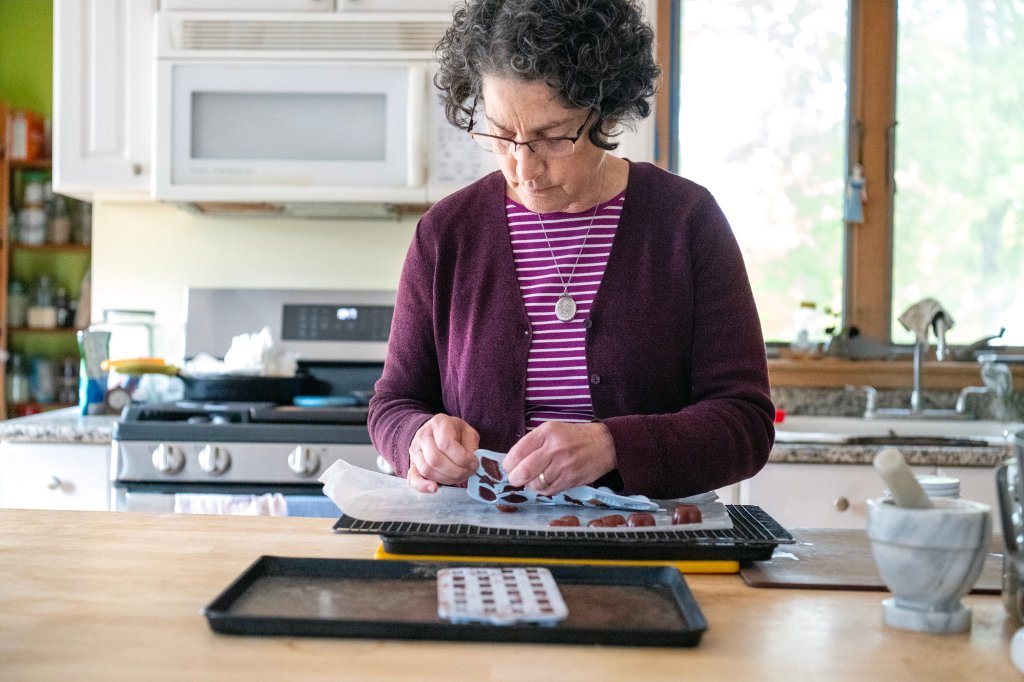
I am a huge fan of “How I Built This,” a podcast in which the courteous, whip-smart Guy Raz interviews entrepreneurs about how they got started. A consistent theme is that the founders learn more from their failures than from their successes.
In that case, I am well on my way.
All week, I have been making batches of gummies. Not that kind. Just the ordinary, kid-friendly sort, like gummy bears and gummy worms. Homemade gummies are among 12 items on a culinary bucket list I drew up in January of stuff I’ve long meant to cook but had never got around to. I am on item nine, and for the first time I am wondering, what was the hell was I thinking?
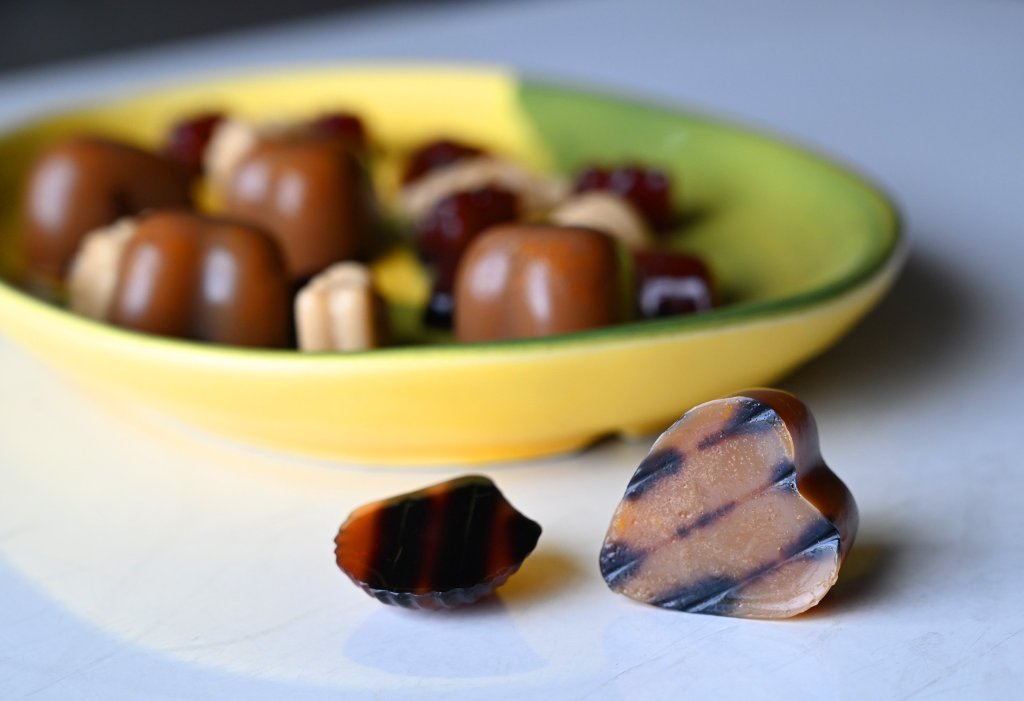
CRASH AND BURN
The word “failure” can barely contain the many ways these gummies have gone horribly wrong: The first batch stuck to the silicon molds. In subsequent batches, I struggled to get the starfish from the shell mold with its arms intact and the bears from their molds with their cute little faces unscathed.
My heart-shaped mold was too big (an ice-cube tray, my partner later informed me), and ice-cube sized gummies are surprisingly unpleasant to eat. Another batch wasn’t sweet enough. When I attempted a coconut milk gummy infused with warm spices — nutmeg, star anise, cinnamon and allspice — the mixture thickened so fast, I didn’t have time to pour it properly; the resulting candies were ropey and gunky.
The gummies I made were ugly, with colors that ran the gamut from beige to brown to dried blood. I set one batch on my baking rack to “cure” (for 12 to 48 hours) following instructions from Pot + Pan Executive Chef Tara Canaday. But something in the gummies reacted to the coating on the rack, and overnight they were tinged, dotted and striped with black. I tried to persuade myself this palette was suitably spooky for Halloween. But if I’m being honest, the gummies looked kind of gross.
One batch came out Superball-bouncy, like extra-hard Jell-O, and needless to say, they were not nice to eat. Which brings me to the biggest problem, one I have not yet solved: Every last gummy wholly lacked chew.
Don’t take my word for it that I flopped. A colleague tasted the tropical lychee experiment and compared the taste and tint to soylent green, the foodstuff from the dystopian 1973 movie of the same name that turned out to be made from — spoiler alert — dead people.
THE PROPER INGREDIENTS
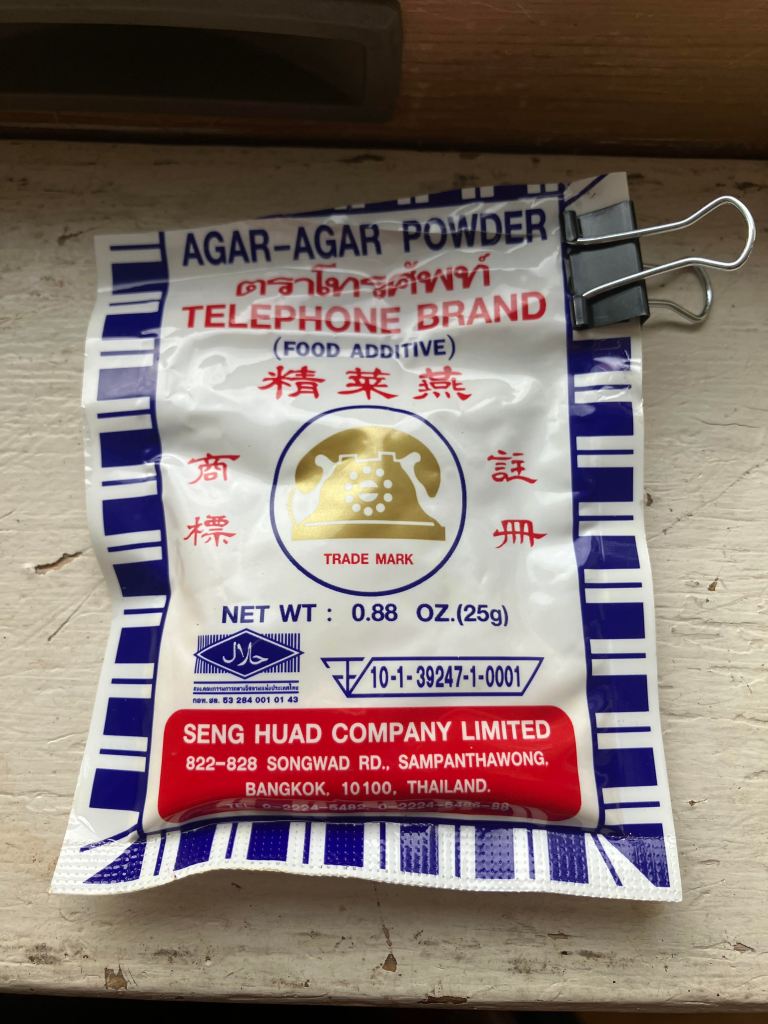
There are no dead people on the list of ingredients in my gummies. I swear. I used sugar, flavorings and liquid — specifically, juice, fruit puree and coconut milk; I’d hoped to make a Moxie gummy but ran out of time. I also tried sweetening with corn syrup. Candymakers use it to prevent crystallization and sometimes to add chew. The gummies improved, but only marginally.
To firm them up, there is, or rather was, gelatin, but I hated the ultra-bouncy gummies it produced and quickly switched to agar-agar. It’s made from seaweed, apt for Maine. Unlike gelatin, it’s vegetarian. Agar-agar is simpler to work with and the gummies it makes needn’t be stored in the fridge as long as you eat them within a few days. It’s also cheaper, in part because you need far less to set the gummies. The brand I bought — at Veranda Asian Market in Portland — has an irresistible name (Telephone) and comes in a darling envelope. That also felt right: an adorable thickening agent for an adorable candy.
Would pectin have worked better? Maybe. But Canaday dissuaded me. She oversees the manufacturing of up to 10,000 cannabis gummies a day at Pot + Pan in Portland and said that gelatin makes for better chew. With pectin, she said, “Your teeth are going to sink into it quicker.” Moreover, pectin is finicky, she warned me, requiring more tools and more precision to get the gummies to set.
When it became clear that texture was my major hurdle, I turned to the internet, where I found advice that mentioned things like low-hydration gelatin, inverted sugars, hydrocolloids and ratios (“5g of X will gel 100ml of water, and 10g of Y will gel 100ml, then combined they would gel 200ml. Nope, in combination they might manage to gel 500ml!”). These passages seemed to have been lifted from my 11th-grade chemistry textbook, and I found them equally baffling.
MANAGING EXPECTATIONS
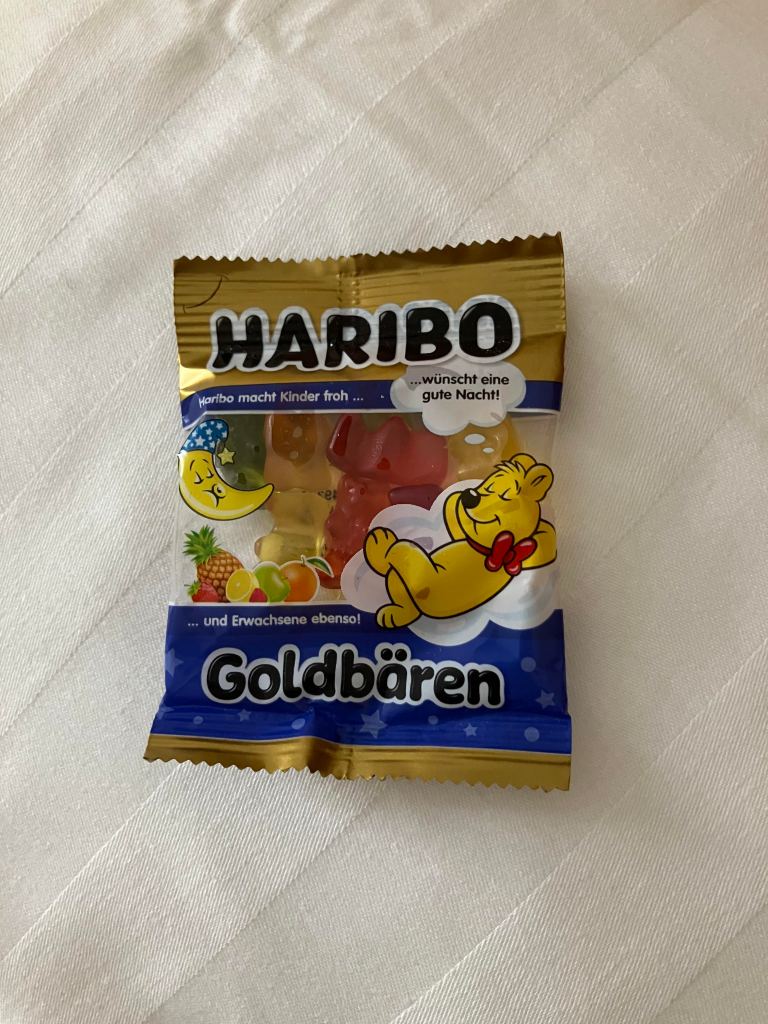
Gummy bears originated in Germany in the 1920s with the founding of the Haribo company. More than 100 years later, I was charmed to visit Germany this spring and find a small package on my hotel bed at turndown. “Haribo wunscht eine gute nacht!!” (Haribo wishes you a good night), it read, with a drawing of a dozing bear and a sleeping crescent moon in a nightcap.
Like Licorice Allsorts, gummies take me straight back to childhood. It’s not just me, either. “Haribo makes children happy – and adults as well,” says the company slogan. Gummies are the third most popular candy category in the United States, according to Canaday, after chocolate (understandable) and hard candy (puzzling). They’ve become a common delivery system for cannabis “because it’s familiar,” Canaday speculated. “People love gummy candy.”
In the process of making gummies over and over and over again, I came to better understand their appeal: bright, saturated colors and satisfying, resilient chew. I never came within a country mile of either.
Canaday, who trained as a pastry chef, had scant experience with gummies when she joined Pot + Pan six years ago. She studied up, quickly coming to appreciate their finicky nature, the outcome dependent on humidity, air temperature, tricky sugar cookery and more. “I would just say there’s definitely a reason why a lot of people do not make gummies.”
Though she champions the homemade, gummy candy may be an exception. “I almost hate to say this — it feels like wrong — but I think it’s better to buy gummies only because there’s so much trial and error that comes along with perfecting a gummy recipe,” she said.
Even so she cheered me on kindly and enthusiastically. In fact, if she ever wants to take her career in a new direction, may I suggest baking coach? “I believe in you. You’re going to do it,” she told me. “I would just say go into it with confidence. I think you’ll do a great job.”
One afternoon, a co-worker tasting my latest failure observed it was more like a jelly than a gummy. Bingo! Julia Child herself may (or may not) have suggested renaming failures in the kitchen: “If your soufflé falls, just call it pudding cake,” she is said to have said.
So here it is, my recipe for Not-a-Gummy Jellies. When I am next craving an actual gummy, I plan to follow my boss’s advice: “Why not just buy a bag of Haribo?” she suggested sensibly. “Save yourself time and trouble.”
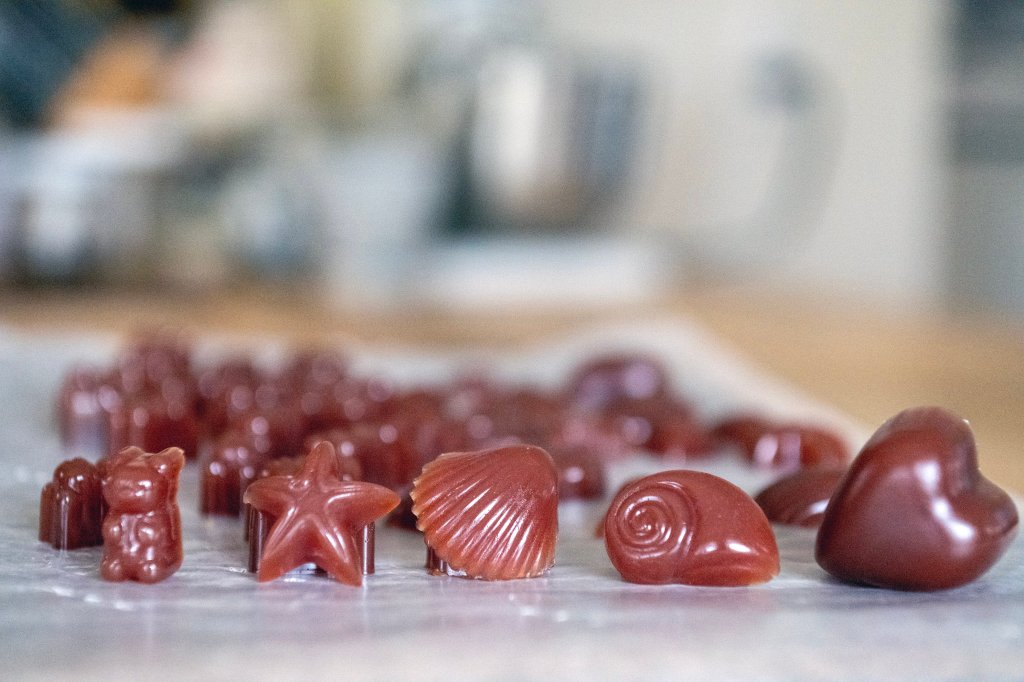
Pomegranate Not-a-Gummy Jellies
I used 100 percent pomegranate juice. You could use a pre-sweetened pomegranate drink (or most other juices excepting pineapple and mango, which have acids that may interfere with gelling) in the same quantity. Adjust the amount of sugar to suit yourself. Find the agar-agar at Veranda Asian Market; be sure to buy powdered, not flaked.
Yield: About 36 gummies depending on the size of your molds
1 cup pomegranate juice
2 teaspoons powdered agar-agar
1 tablespoon light corn syrup
2 ½ tablespoons granulated sugar
Dash salt
Set the gummy molds on a cookie sheet so you can move them without spillage.
Put all the ingredients in a small pot on the stove. Bring to a boil, stirring to combine and melt the sugars. Keep at a boil for 2 to 5 minutes. Pour into molds. I used a measuring cup, but if you really get into making these, you’d probably want to try the eye dropper suggested in many recipes.
Let cool on the counter for about 30 minutes, then firm up in the refrigerator another hour or so. Unmold. You can eat them immediately, though some advise “curing” the gummies on a baking rack for 12 to 48 hours before eating them to improve the texture; I’m not sure I could tell the difference. Store in the refrigerator.

We invite you to add your comments. We encourage a thoughtful exchange of ideas and information on this website. By joining the conversation, you are agreeing to our commenting policy and terms of use. More information is found on our FAQs. You can modify your screen name here.
Comments are managed by our staff during regular business hours Monday through Friday as well as limited hours on Saturday and Sunday. Comments held for moderation outside of those hours may take longer to approve.
Join the Conversation
Please sign into your CentralMaine.com account to participate in conversations below. If you do not have an account, you can register or subscribe. Questions? Please see our FAQs.